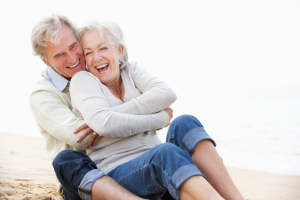Foot 411 Healthy Foot Tips for Aging Adults And Seniors
Just like the rest of your body, your feet go through many changes as you get older. Here’s what to expect from your feet as you enter middle age and beyond, plus the signs and symptoms of abnormal changes that could signify serious health problems.
As if worrying about a changing appearance and reduced energy wasn’t enough, another reality that goes along with aging is experiencing changes to your feet. Some seniors and elderly experience foot pain, others begin to have trouble with their balance. The key to overall good health as you approach middle age and beyond is knowing what foot changes are normal and which could be signs of serious age-related health problems. After all, the ability to walk — pain free — is one of the most important bodily functions you can continue to possess as you enter this new stage of life.
Normal Foot Changes
Years of walking, jogging, jumping and other activity takes its toll on your feet, which withstand very high amounts of pressure and stress every day. The decades of mileage on your built-in shock absorbers can lead to a number of normal foot changes, including:
Changed Foot Shape
As you age, the ligaments and tissue in your body become more lax, and this also goes for the ligaments and tissue in the bottom of your foot (the plantar fasciitis). The looseness leads to your foot widening and can also cause your arches to collapse, which can lead to pain in the arch and heel. In addition to wearing arch supports and possibly orthotics, it’s important to properly measure your feet when shoe shopping so you get the best fit for whatever condition your feet may be in.
Thin and Dry Foot Skin
Try as you might to keep your feet moisturized, you’ll begin to notice that your feet are drier than they used to be, and the skin is a lot thinner. This is due to decreased circulation, which leads to a loss of fat padding in the feet as well as the skin’s inability to heal itself quickly. You may also experience more corns, calluses and heel fissures, as your foot skin is unable to hold moisture like before. It’s important to partake in regular pedicures to keep your feet clean, moisturized and callus free. It’s an indulgent wellness trick that can go a long way in the health and life of your feet.
Less Foot Padding
As we mentioned before, less blood circulation decreases your foot’s natural padding, which can lead to increased pain in your heels and in the ball of your feet. One way to increase circulation and ward off this problem is to engage in regular light exercise.
Abnormal Foot Changes
While you should expect many changes in your feet as you grow older, there are some signs and symptoms that may signify diseases and other serious conditions. Some changes that may require a visit to a podiatrist or a chiropodist include:
Sores or Ulcers That Don’t Heal
Any blisters, sores, ulcers or even ingrown toenails that appear on your feet and seem to take forever to heal could signify that you’ve developed diabetes, a condition characterized by high blood glucose. Other signs of diabetes that show up in your feet include numbness, tingling and cold feet.
Pain and Stiffness In Your Joints
If your feet feel stiff and painful, it could be a sign that you have arthritis. If left untreated, arthritis can progress until it becomes excruciatingly painful to walk. However, it can also be symptomless. In fact, over half of all US adults in their 60s and 70s who have arthritis in their feet and ankles do not show symptoms. Therefore, it’s a good idea to have your feet checked by a podiatrist, whether you feel stiffness or not.
The Formation of Bunions
Though bunions affect people of all ages, aging women seem to be more likely to develop the painful condition — most likely due to long term wear of high heels, as podiatrists and sites like WebMd and MedicineNet point out. While there is no way to completely get rid of a hallux valgus (the medical term for bunion), you can help the pain and other symptoms that come along with them by trying these proven methods to reduce bunion pain. A visit with a podiatrist may also help you decide on a plan to tackle bunion discomfort.
The Formation of Hammertoes
Hammertoes — or the painful, involuntary bending of one or both joints of the second, third, fourth and fifth toe — is also generally caused by ill-fitting shoes or frequently wearing high heeled shoes from youth throughout adulthood. Hammertoes is a painful condition that progresses quickly, so it’s important to give it early podiatric attention. Additional symptoms of hammertoes include increased calluses and corns, contracture of the toes and inflammation and redness.
RELATED: Yoga Toes Really DO Help Foot Pain
Frequent Falling
While there are many reason aging people may frequently fall, one of the leading causes of elderly falls is wearing ill-fitting shoes. It’s estimated that three out of four people over the age of 65 wear shoes that are too small — and shoes that don’t fit properly don’t give the proper support, which can increase your chances of instability and falling.
RELATED: How Podiatrists Are Helping Reduce Risk Of Elderly Falls
Your feet get larger as you age, so be sure to always measure your feet when buying new shoes, and shop in the afternoon, when your feet are at their largest. This simple trick, in addition to the caregiving steps we mentioned above, will keep that spring in your step for years and years to come.
Notice concerning medical entries:
Articles having medical content shall serve exclusively for the purpose of general information. Such articles are not suitable for any (self-) diagnosis and treatment of individual illnesses and medical indications. In particular, they cannot substitute for the examination, advice, or treatment by a licensed physician or pharmacist. No replies to any individual questions shall be effected through the articles.







